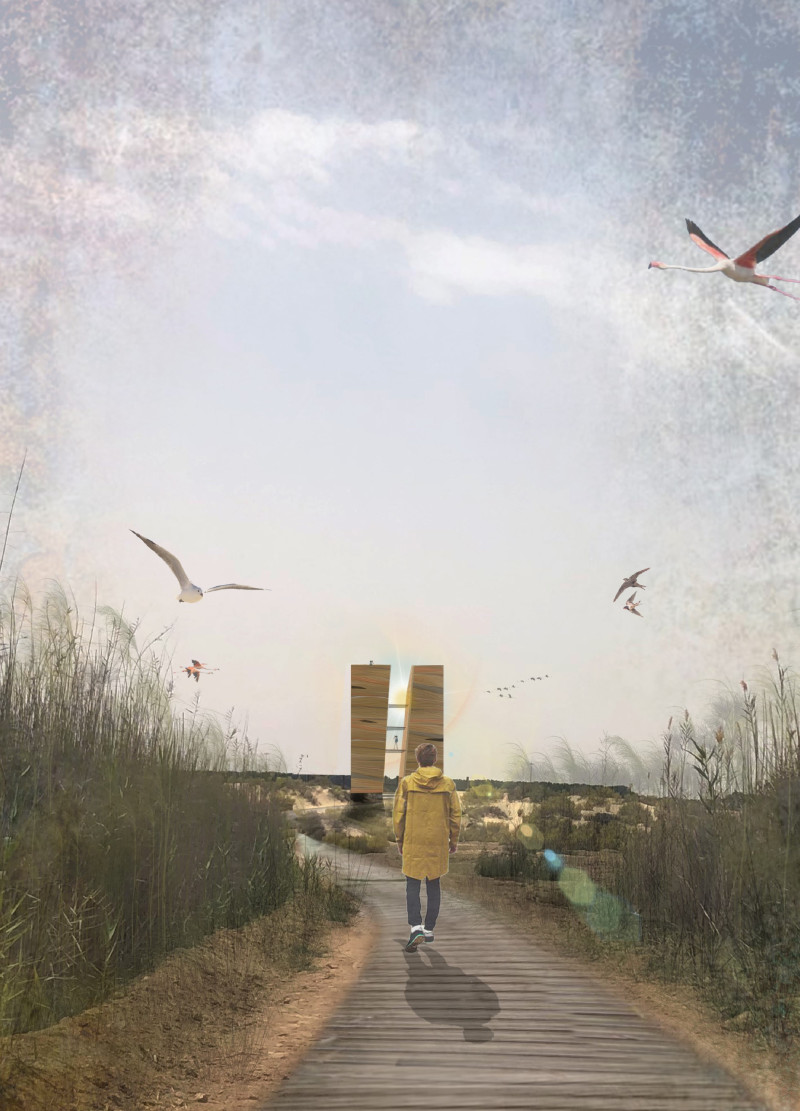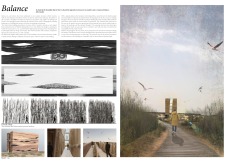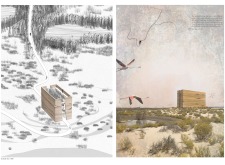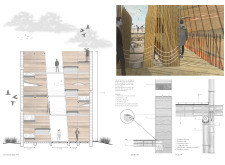5 key facts about this project
The setting is the Al Wathba Wetland Reserve in Abu Dhabi, where an innovative observation building takes shape. Functioning as a space for visitors to engage with the landscape, the design is rooted in a concept of balance that links the natural world with human creativity. Its architectural form and layout encourage exploration and interaction, drawing people into a unique experience of the wetlands.
Design Concept
The design focuses on harmony and balance, inspired by the ideas of John Ruskin. The building has a distinct shape that widens as it rises, featuring a diagonal opening that runs vertically along its facade. This design not only marks important celestial events, such as the winter solstice, but also serves as a modern reflection of a solar calendar, tying the structure to the rhythms of nature.
Spatial Organization
Inside, the layout promotes easy movement between outdoor and indoor areas, allowing visitors to connect with the wetlands. A series of ramps guide people through different spaces, creating a flow that is both engaging and intuitive. The design offers a mix of wide, open areas and more intimate nooks, giving visitors varied experiences as they explore the structure and its surroundings.
Construction Details
The exterior is built using rammed earth, a method that creates strong and durable walls. This material links the building to the earth, enhancing energy efficiency while maintaining a natural aesthetic. Openings in the walls frame views of the outside, allowing light and air to participate in the interior while fostering a visual relationship with the wetlands.
Interior Elements
The central core of the building supports circulation routes, incorporating ramps and bridges for ease of movement. Vertical columns define the space and connect to the surrounding plants, reinforcing the link between the structure and its environment. The use of bamboo for flooring adds a layer of texture, highlighting an emphasis on sustainability and local resources.
Light filters through a series of carefully designed openings, casting patterns and shadows within the space. This interplay of light and structure enriches the atmosphere, drawing visitors deeper into the tranquil experience of the wetlands.






















































